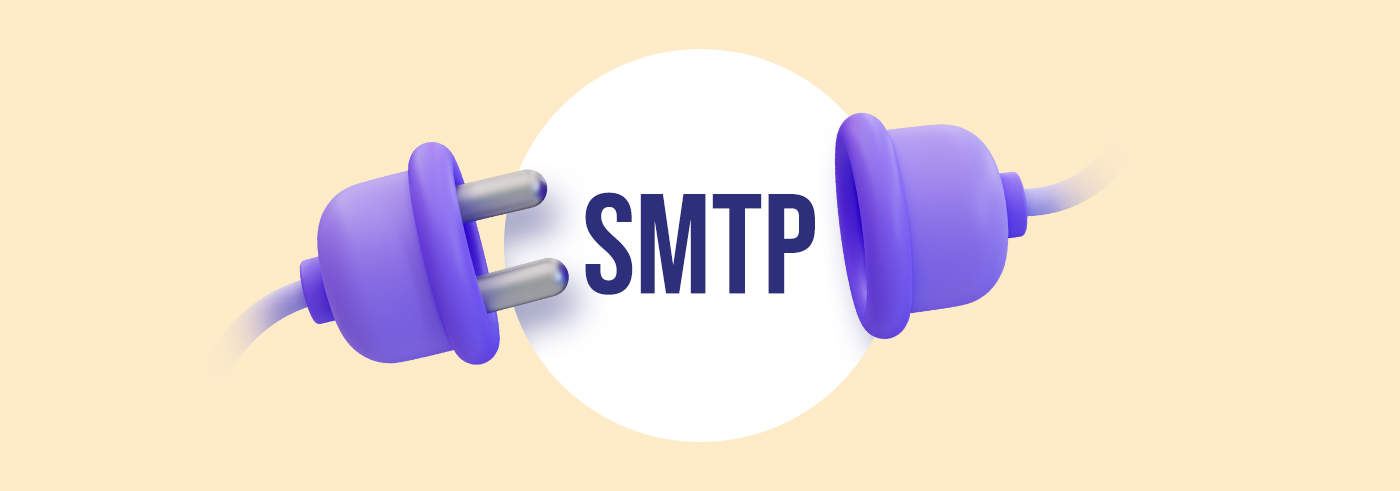Being a content creator can be thrilling. You get to express yourself, inspire others, and build an engaged community around what you’re passionate about. But behind the highlight reels and curated posts, many creators face a less glamorous reality: burnout.
The content creator burnout syndrome is more than just feeling tired. It’s a chronic emotional and physical exhaustion that comes from the non-stop pressure to stay relevant, keep up with algorithms, and meet the never-ending demand for new content. Whether you’re a YouTuber, podcaster, influencer, or social media manager, it can slowly drain your creativity and joy.
That is why we created this article to explore what content creator burnout syndrome is, how to notice it, how to recover from it, and most importantly, how to prevent it from creeping back into your life.
Table of Contents
- Understanding Content Creator Burnout Syndrome
- Practical strategies for dealing with the burnout syndrome
- Prevention tactics on how to avoid the burnout syndrome
- Conclusion
Understanding Content Creator Burnout Syndrome
To combat burnout effectively, it's crucial to understand its signs, symptoms, and roots. Of course, it manifests differently for everyone, but certain signs appear consistently.
Burnout is a state of chronic stress that leads to emotional and physical tiredness, cynicism, and a sense of reduced accomplishment. It often starts subtly and grows over time until it significantly impacts one's work and well-being.
Signs you might be burnt out
Let's first discuss what the most common signs of the content creator burnout syndrome are.
- Constant exhaustion, even after rest or time away from work
- Physical symptoms like headaches, changes in sleep patterns, or changes in appetite and weight
- Persistent lack of motivation or excitement about creating
- Emotional detachment from your audience or content
- Feelings of impostor syndrome or self-doubt
- Drop in content quality and consistency
- Procrastination - putting off creation until the last minute
- Platform anxiety - feeling dread when opening your content platforms
- Increased reliance on coping mechanisms like excessive social media scrolling or unhealthy habits
- Cynicism and negativity towards content creation
Common causes of burnout syndrome
In the case of content creators, burnout can be caused by various factors. Understanding these unique challenges is the first step toward developing effective strategies to combat burnout.
- Constant pressure to produce - the content demand rarely stops, which makes it difficult for many creators to slow down
- Algorithm anxiety - most platforms reward consistency and frequency, so many creators feel they must constantly produce content to remain visible
- Blurred work-life boundaries - when your personal experiences become content and your home is your studio, separating work from life becomes nearly impossible
- Creative fatigue - when every idea needs to be optimized for clicks and engagements, creativity can feel like a chore
- Comparison culture - watching other creators’ posts automatically makes you compare yourself to them, but it can distort reality and make you feel inferior as a creator
- Audience expectations - the more you grow, the more people expect from you, and being under constant public scrutiny adds psychological pressure that most traditional careers don’t face
- Income instability - if being a content creator is your main source of income, fluctuating revenue adds financial stress to creative pressures
Practical strategies for dealing with the burnout syndrome
If you’re already feeling burnt out, know that recovery is possible. Here are some ways to start healing and rediscover the joy of creating:
1. Prioritize self-care
Taking breaks is essential. Really. Even a few days or a week can make a big difference. Take a longer break if you need it. Use the time to unplug, rest, and reflect without the pressure to produce. Prioritize sleep, healthy eating, and regular exercise. Think about implementing techniques like mindfulness or meditation.
You can prepare yourself for the break by preparing some minimal scheduled content in advance. Set a clear return date if it helps you reduce anxiety.
Communicate transparently with your creator community. Don’t worry. Most audiences respond positively to creators who communicate honestly about needing time to recharge. They are human beings, too. They’ll understand. Plus, it’s your audience, so they’re most likely to support you even if you need to take a break.
2. Reconnect with your “why”
Once you rest and recharge, it’s good to revisit your original motivation for creating content. Go back to the roots. Try to remember the core passion that sparked your creator journey.
When experiencing burnout, you’re feeling overwhelmed and probably only notice the negative aspects of being a content creator. But it’s a good moment to reflect on your milestones and achievements to see how far you’ve come. You can also review positive feedback from audience members you’ve helped and who appreciate you.
3. Re-evaluate your workflow
The next step in dealing with burnout syndrome is to analyze your workflow. Look at which content types drain you most and which energize you. Evaluate the way you work and how it can affect your well-being.
Discover which topics consistently exhaust you and should be changed to something that will bring you more joy in creating. Analyze which content formats require disproportionate effort compared to results and how you can minimize the effort of creating them. You can also think about how you can substitute them with other formats that bring more results but don’t require so much effort.
Find out what repetitive tasks you have and automate or delegate them, if possible. If you have similar tasks, batch them to improve efficiency and avoid the mental cost of switching between different tasks.
The last step of re-evaluating your workflow is to choose your project wisely. If you feel that a certain project will increase your overwhelming workload or simply doesn’t align with your content, simply say “no”.
4. Build a support system
Feeling burnt out, especially among content creators, is not uncommon. If you’re in touch with other content creators, you can reach out to them for peer support and understanding.
You’d be surprised how many people can relate. A lot of creators have experienced burnout. You will be able to exchange experiences, or they can provide you with support and help. Vulnerability can create a deeper connection and relief. You can also lean on friends and family for emotional support. If burnout is impacting your health or daily life, consider therapy or counseling. Your well-being is more important than any content calendar.
5. Set realistic expectations and goals
Sometimes our ambitions exceed our capacity, and our goals are so great that they overwhelm us. It doesn't mean that we shouldn't dream and aim high. It just means that our goals should be realistic and feasible. That is why you should start with breaking down large goals into smaller, manageable steps. Thanks to this tactic, you’ll be able to celebrate small wins and acknowledge accomplishments.
Another important practice is to focus on your personal progress. Do not compare yourself with other creators - how often they post, how many followers they have, how many likes and comments they got. You’re on your own individual path. It’s not a race, and the Internet is a big enough place for everybody.
Prevention tactics on how to avoid the burnout syndrome
Burnout doesn’t just come from doing too much. It often comes from doing too much without support and structure. Here are a few tactics to prevent yourself from experiencing burnout syndrome in the future.
1. Develop healthy habits
Just like coping with burnout syndrome, many practices should be adopted into your daily life in order to maintain your work hygiene and avoid burnout again. One of them is to develop healthy habits.
This point includes many aspects, starting with setting realistic goals and putting less pressure on yourself to create content. This includes organizing your work - creating similar content in batches, abandoning tiresome tasks that produce little results, and generally optimizing the types and formats of content you create.
Healthy habits also involve setting clear time frames in which you create, as well as establishing offline time away from technology and social media. Take care of your work-life balance as a content creator. This also applies to your space in the physical sense. Try to designate a specific space where you create that you can leave when you're not working. Even if you create at home, let it be a room, or even a part of it, dedicated just to work.
2. Regularly assess and adjust
Even if you have overcome burnout syndrome and optimized your workflow, it is not a once-and-for-all solution. It's important to constantly monitor how you work and the impact it has on you. That way, you can make the necessary changes before things get much worse. Be mindful of situations and triggers you have experienced in the past that led to burnout. You can consider them as red flags that indicate you need a change in your strategy.
3. Batch content and schedule ahead
Instead of producing daily under pressure, record or write multiple pieces in one session. It’s a good practice, especially when you systematically produce similar content. You can create several posts in a row to avoid the stress and confusion coming from constantly switching between content types and topics. Plus, it creates breathing room for off days as you’ll have some content already created in advance.
4. Build a buffer in your content calendar
Give yourself a margin in content planning. Don’t fill every day with publishing obligations. Schedule your “off” days, unexpected delays, or spontaneous creativity. For example, if you post three times a week, plan for two and leave one as optional to decrease the pressure.
Such a buffer reduces the stress of falling behind and helps prevent guilt-driven content creation. It also gives you room to breathe when life doesn’t go as planned.
5. Diversify your formats
Doing the same thing over and over can be draining. If you’re always writing, maybe try recording a podcast. If you’re used to TikTok, explore carousel posts on Instagram. Experiment with what feels exciting or easier on your energy. Variety keeps your mind stimulated and prevents creative boredom. It can also help you discover new formats that might suit your energy or skill set better.
6. Outsource when you can
As your content grows, so do your responsibilities. Consider delegating repetitive or time-consuming tasks. Whether it’s video editing, graphic design, scheduling, or responding to your DMs. Maybe hire a freelancer for one task per week or use automation tools like Canva templates, ChatGPT for article outline, or Zapier for cross-platform posting.
Delegating frees up your time and mental space to focus on high-impact creative work. You don’t have to do everything yourself to maintain authenticity.
Conclusion
Content creator burnout is a real and significant challenge in the digital age, but it doesn’t have to be inevitable. Even if you experience it, it doesn’t mean you’re weak or incapable. It simply means you’ve been strong for too long without enough support. And the good news is that it’s not the end of your creative journey.
Recognizing its signs and understanding its roots are the first steps towards reclaiming your well-being and passion. Taking intentional steps toward recovery will help you regain both your energy and your joy. Whether it’s stepping back to reconnect with your “why”, setting healthier boundaries, or simply letting yourself rest, your well-being is not a luxury but a necessity.
Prevention is just as important as recovery. Building a sustainable system, streamlining your workflow, experimenting with new formats, and outsourcing when possible are smart strategies that protect your creativity and productivity in the long term. Remember, the goal isn't just to survive the demands of content creation. It's to thrive, creating with joy and longevity. The most impactful creators are not the ones who never pause, but those who know how to protect their spark so they can keep showing up. By implementing these strategies, you're investing in yourself and the long-term success and enjoyment of your creative endeavors. Take care of yourself, and your creativity will follow.








